FAVORITE RACING CARS, PART II.
 Monday, October 1, 2018 at 09:08AM
Monday, October 1, 2018 at 09:08AM Editor's Note: Peter's column about "Favorite Racing Cars" has been even more popular than when we first posted it. Part II, which covers more of his favorite racing machines, features Eagle, McLaren and much more. Enjoy. -WG
Peter M. DeLorenzo
Detroit. As I expected, last week's column - Favorite Racing Cars, Part I - generated a lot of comments and brought forth lists of favorite racing cars from a wide range of enthusiasts, both here in Reader Mail and on my twitter account (@PeterMDeLorenzo). It's a fun subject, because there are no wrong answers and everyone has personal favorites. I covered a lot of ground last week, but as I said, there was much more to come. This week, I am going to bring forward an entirely new list of racing cars, and, I wouldn't be surprised if there is a "Part III" down the road. So, without further ado, let's go...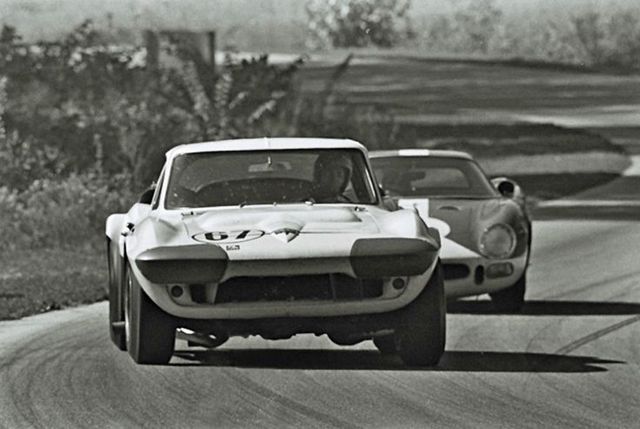 (Dave Friedman photo)
(Dave Friedman photo)
First of all, I neglected to post a picture of a Chevrolet Corvette Grand Sport last week, so here is a shot of Jim Hall (No. 67 Chevrolet Corvette Grand Sport) running ahead of Augie Pabst (No. 2 John Mecom Racing Zerex Ferrari 250 LM) out of Canada Corner during the Road America 500 in Elkhart Lake, Wisconsin, September 13, 1964. 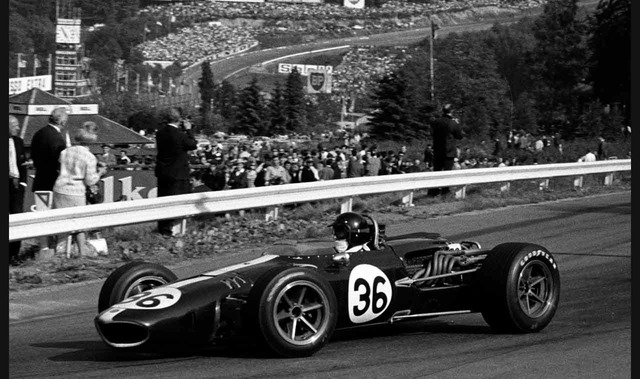 (All American Racers)
(All American Racers)
Dan Gurney on his way to the win in the 1967 Belgian Grand Prix in the No. 36 All American Racers Eagle T1G Gurney-Weslake V12. Gurney's victory at Spa is the first and only time that an American citizen built and raced a car of his own construction and put it into the winner’s circle of a World Championship F1 race. Yes, there have been many beautiful open-wheel machines - the aforementioned Ferrari 156; Colin Chapman's Lotus 49-Cosworth; the McLaren-Ford MP4/8A; the McLaren M16C Indy car; Jim Hall's Chaparral 2K Cosworth Indy car; the All American Racers Indy cars, especially the Boundary Layer Adhesion Technology (BLAT) Eagle-Chevy, and on, and on, and on* - but for my money Gurney's beautiful midnight blue 1967 Eagle F1 machine, designed by Len Terry and constructed in Santa Ana, California, remains my favorite open-wheel car of all time and is still absolutely stunning in person. (*As you may have noticed, I have no contemporary open-wheel machines on my list. That's because - particularly in F1 - the cars are cold, devoid of beauty, emotionally un-involving and eminently forgettable.)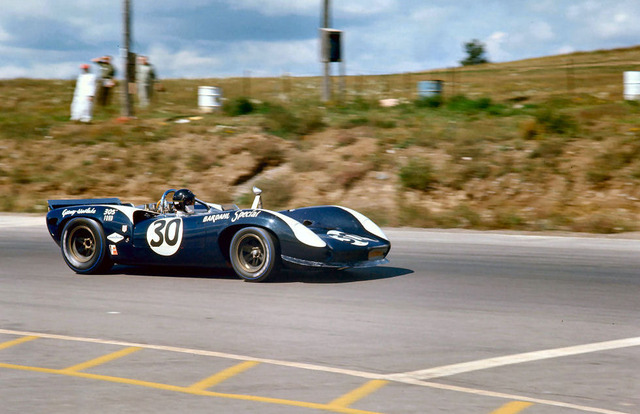 (Dave Friedman photo)
(Dave Friedman photo)
Speaking of Lola, I think the T70 coupe is one of the most beautiful racing machines of all time. But if asked to pick one Lola over all of the many great ones, it would be the gorgeous No. 30 All American Racers Lola T70 Mk.2 - powered by a Gurney-Weslake 305 Ford - that Dan Gurney drove to victory in the second Can-Am race of the inaugural season for that legendary racing series, at Bridgehampton, New York, September 18, 1966.
And I would be remiss if I didn't mention another group of my all-time favorite racing machines, those beautiful - and brutal - Can-Am machines from Bruce McLaren and McLaren Cars. I have five 1/18 scale racing car models on my desk currently (yes, I have a few more than that). Three Chaparrals (2C, 2E and 2F), a Porsche 910, and Dan Gurney's No. 1 McLaren M8B Chevrolet that he ran in the Can-Am at Michigan International Speedway in a guest drive. I was fortunate to see the Can-Am series in-period, and the kaleidoscope of great racing machines from that era deserves the term "legendary." Machines from Chaparral, Ferrari, Lola, Porsche and Shadow, along with a long list of "one-offs" are seared in my memory. To see - and hear - a Can-Am car flat-out at Road America was simply the best of the best racing experiences one could have. And I relish those experiences to this day. So following are a few classic images of the McLaren Can-Am machines.
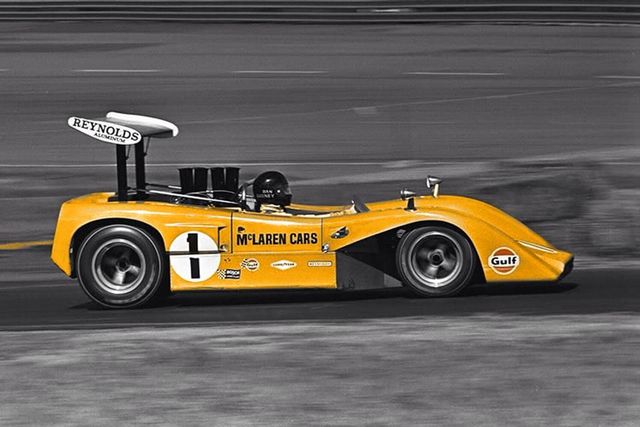
Michigan International Speedway, 1969. Dan Gurney in the No. 1 McLaren M8B Chevrolet finished third behind teammates Bruce McLaren (No. 4 McLaren M8B Chevrolet) and Denny Hulme (No. 5 McLaren M8B Chevrolet) in a guest drive.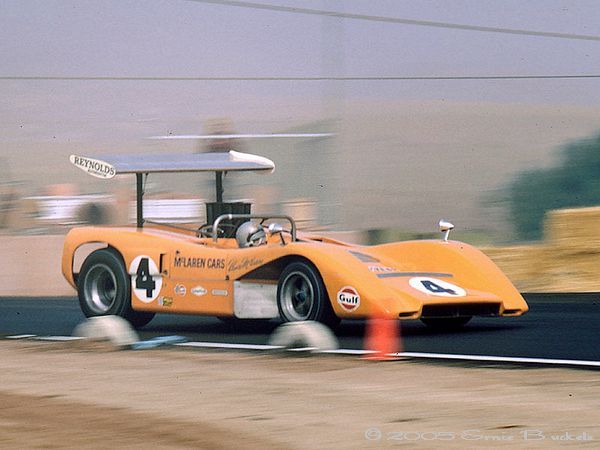 (Photo by Pete Lyons)
(Photo by Pete Lyons)
Laguna Seca, California, 1968. Bruce McLaren (No. 4 McLaren M8A Chevrolet) during practice for the Can-Am. 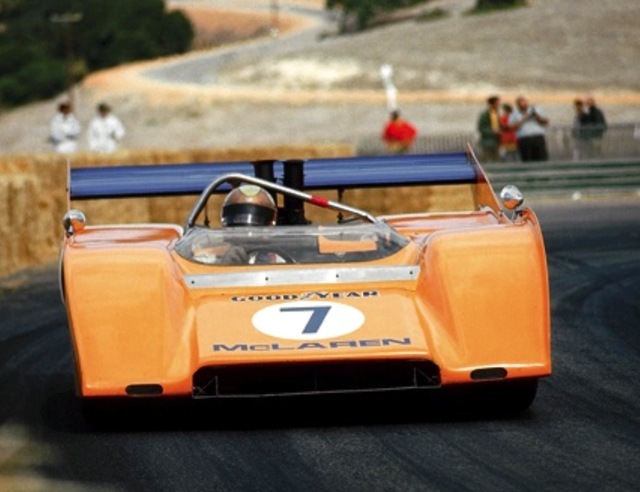 (Photo by Pete Lyons)
(Photo by Pete Lyons)
Peter Revson on his way to the win in the Can-Am at Laguna Seca in his McLaren M8F Chevrolet, 1971.
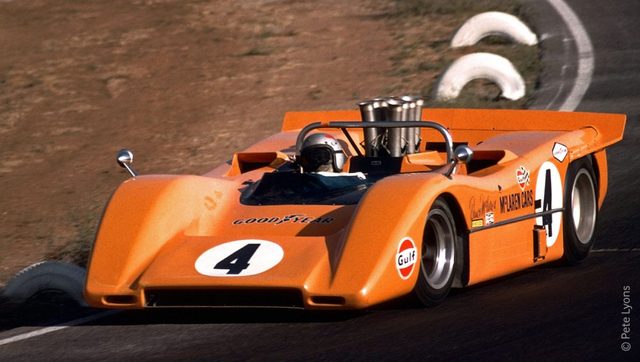
(Pete Lyons)
Riverside International Raceway, 1968. Bruce McLaren (No. 4 Gulf/Reynolds Aluminum McLaren M8A Chevrolet), L. A. Times Grand Prix Can-Am.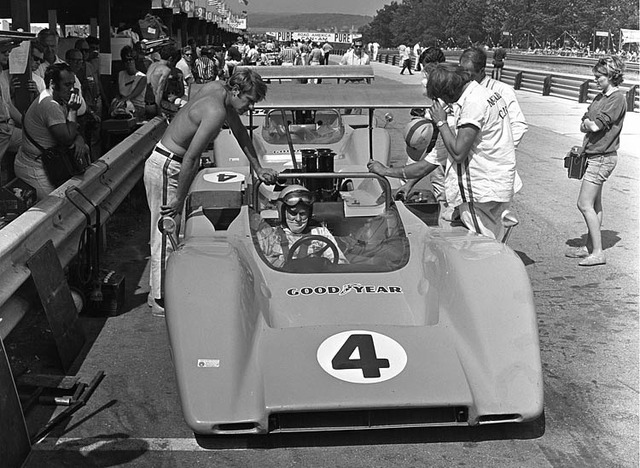
Elkhart Lake, Wisconsin, 1969. Bruce McLaren (No. 4 Gulf/Reynolds Aluminum McLaren M8B Chevrolet) during practice for the Can-Am at Road America.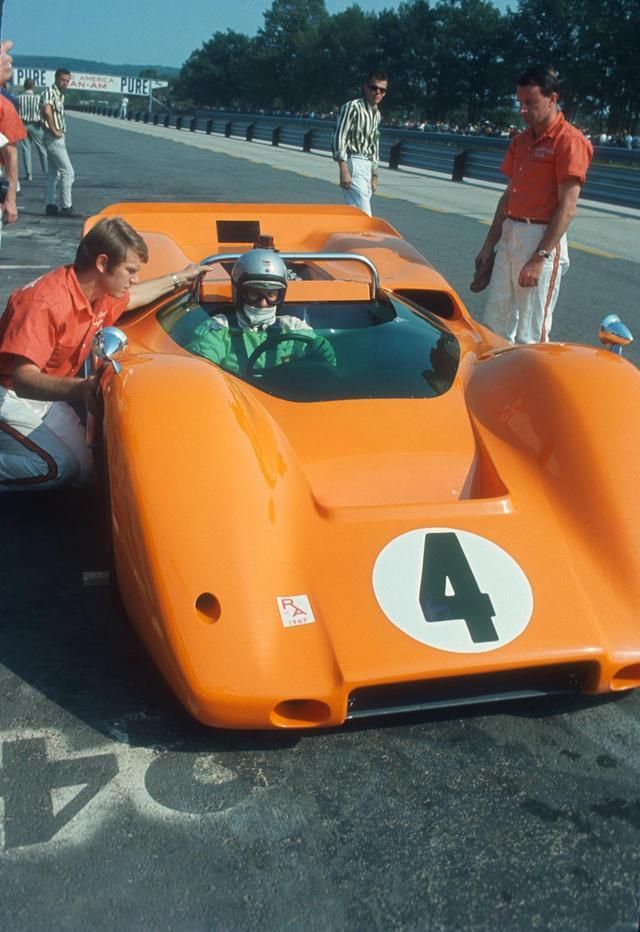 (Pete Lyons photo)
(Pete Lyons photo)
Elkhart Lake, Wisconsin, 1967. Bruce McLaren in his No. 4 McLaren M6A Chevrolet - with Tyler Alexander - during practice for the Can-Am at Road America.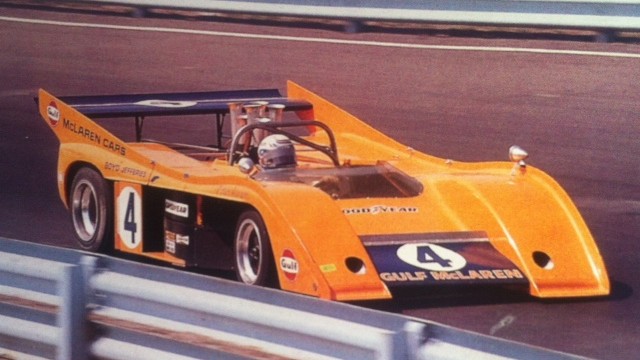 (Pete Lyons photo)
(Pete Lyons photo)
Watkins Glen, New York, 1972. Peter Revson (No. 4 McLaren M20 Chevrolet) qualified on pole for the Can-Am but finished second to teammate Denny Hulme (No. 5 McLaren M20 Chevrolet) in the race.
Yes, I know, too many photos of the McLarens, but these were seminal machines emblematic of that run-what-you-brung era. Are there other favorite race cars? Absolutely. The Vanwall Grand Prix machine. The Jaguar D-Type. The Lotus 25 Grand Prix car. The Lotus-Ford Indianapolis cars, both the first machines in 1963 and Jim Clark's Lotus 38-Ford winner in 1965. Mario Andretti's John Player Special Lotus 78/79 F1 World Championship machines. Jackie Stewart's 1971 Lola T260 Chevrolet Can-Am car. The 2003 Le Mans-winning Bentley Speed 8. Andy Granatelli's 1967 STP Turbine Indy car driven by Parnelli Jones, and the updated "wedge" design turbine cars. As I said, the list goes on and on and on. I will cover more ground when I get to Part III, down the road.
And that's the High-Octane Truth for this week.
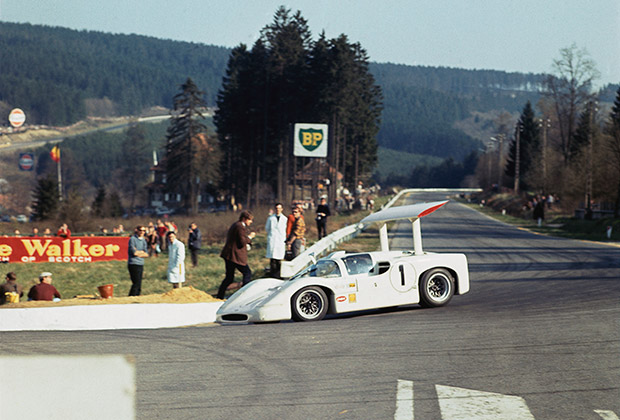
Spa Francorchamps, May 1, 1967. The No. 1 Chaparral Cars Chaparral 2F Chevrolet driven by Phil Hill and Mike Spence qualified on the pole for the Spa 1000 Kilometers but did not finish due to gearbox issues.





